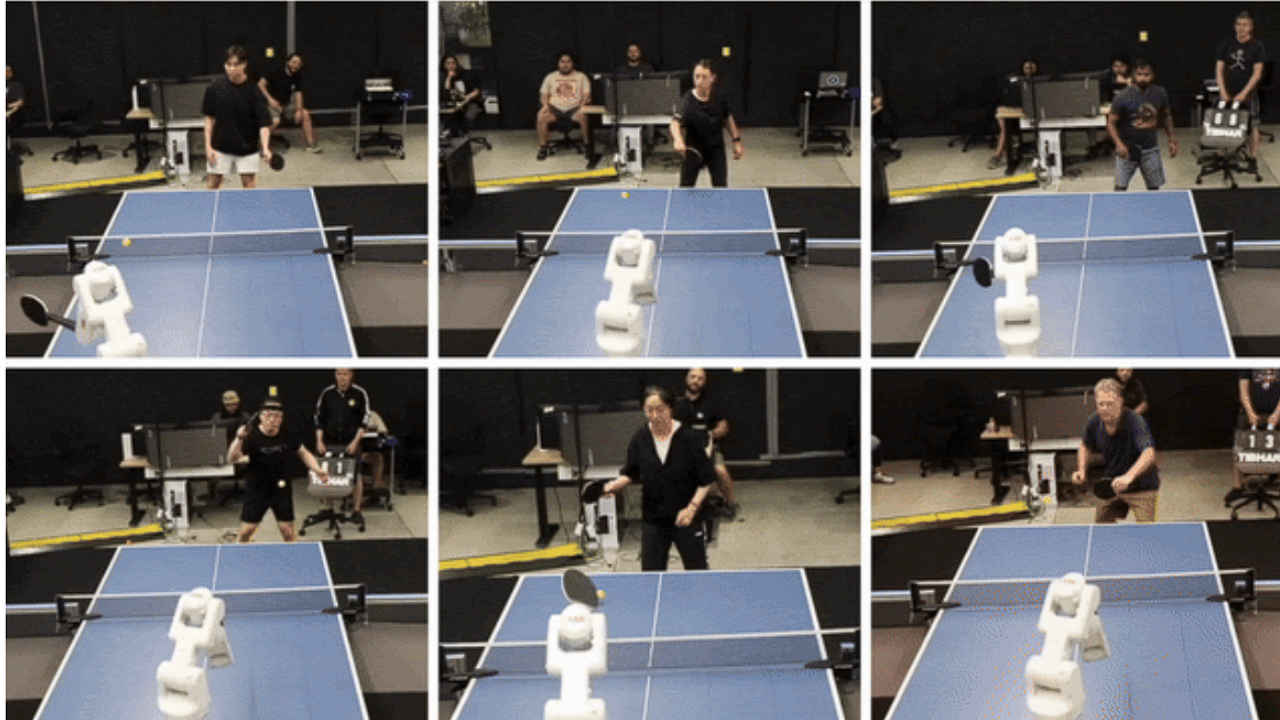Human vs AI: Watch Google DeepMind’s AI-powered robot playing table tennis

Google DeepMind has shared a few videos of its AI-powered robot competing with humans in a game of table tennis.
According to the company, this AI-powered robot is the first agent to achieve amateur human level performance in this sport.
During research, the robot faced 29 human opponents across four skill levels, from beginner to advanced.
When it comes to pushing the boundaries of artificial intelligence, Google DeepMind is at the forefront, showcasing the remarkable capabilities of AI. The company has now shared a few videos on X of its AI-powered robot competing with humans in a game of table tennis.
Imagine a robot that can anticipate your every move and return shots with pinpoint accuracy—that’s exactly what DeepMind’s innovation aims to achieve. The integration of AI in such a dynamic sport as table tennis shows how these technologies can be adapted to tackle complex, fast-paced tasks, offering a glimpse into the future of interactive robotics and machine learning.
Also read: Google Deepmind’s new AI agent ‘SIMA’ will be your in-game teammate: Check details
Meet our AI-powered robot that’s ready to play table tennis. 🤖🏓
— Google DeepMind (@GoogleDeepMind) August 8, 2024
It’s the first agent to achieve amateur human level performance in this sport. Here’s how it works. 🧵 pic.twitter.com/AxwbRQwYiB
According to the company, this AI-powered robot is the first agent to achieve amateur human level performance in this sport.
To train the robot, Google DeepMind gathered a comprehensive dataset of initial table tennis ball states, including position, speed, and spin. This dataset allowed the system to practise and master various skills, such as forehand topspin, backhand targeting, and serve returns.
Also read: Google DeepMind’s new AI can generate audio for videos: Here’s how it works
The training began in a simulated environment that accurately models the physics of table tennis matches. Once the robot was deployed in the real world, it continued to refine its skills by collecting data on its performance against human opponents, creating a continuous feedback loop. The system was designed to adapt to different playing styles by tracking opponents’ behaviours, such as their preferred sides for returning the ball. This adaptability enabled the robot to experiment with various skills, monitor its success rate, and adjust its strategy accordingly.
During research, the robot faced 29 human opponents across four skill levels, from beginner to advanced. The results showed that the robot performed at an intermediate amateur level. Despite its impressive capabilities, it did not manage to beat advanced players, due to physical and skill limitations, including reaction speed, camera sensing capabilities, spin handling, and the challenges of accurately modelling the paddle’s rubber in simulations.
Ayushi Jain
Tech news writer by day, BGMI player by night. Combining my passion for tech and gaming to bring you the latest in both worlds. View Full Profile





